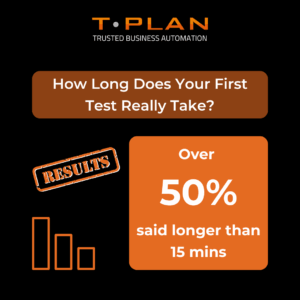
Test-Driven Development (TDD) and Behaviour-Driven Development (BDD) are methodologies at the forefront of software testing, optimising the way developer’s approach coding to ensure more robust and reliable applications.
Incorporating TDD and BDD into your development workflow can transform the quality and effectiveness of the software produced. This article aims to provide an in-depth comparison of TDD vs BDD, shedding light on their similarities, differences, and respective use cases.
Table of Contents
Understanding Test-Driven Development
TDD, or Test-Drive Development is a cornerstone of modern software development practices, deeply rooted in agile methodologies It emphasises a meticulous approach to programming where testing leads the way.
Key Aspects of TDD
Iterative Process
Agile Foundation: TDD is an agile-based continuous process, involving test case creation at each development stage to define expected code behaviour.
Cycle: Developers write a test that fails (since the functionality doesn’t exist), code just enough to pass the test, and then refactor to optimise.
Development Practice
Test First, Code Next: Before writing actual code, developers draft a unit test case showcasing the desired behaviour, ensuring a test-first approach.
Focus on Code Functionality: TDD zeros in on implementing code functionality, using programming-centric terminology and organising tests based on code structure.
Benefits and Challenges
Quality and flexibility: TDD leads to modular, extensible code with fewer defects, thanks to in-depth testing.
Skill Requirement: Effective TDD demands considerable skill, particularly in isolating components for testing and maintaining up-to-date unit tests.
Test-Driven Development is an integral part of automated testing systems, T-Plans Robot not only adheres to agile principles but also ensures the delivery of high-quality software, aligning with the objective to enhance testing strategies and project outcomes.
Advantages of TDD
Improved Code Quality and Maintenance
TDD leads to cleaner, more robust code, reducing defects significantly. This approach acts as a safety net, catching errors early.
Debugging becomes more straightforward due to the modular nature of TDD code, making it easier to understand and maintain.
Enhanced Development Efficiency
Initially, it might seem that writing tests before code would slow down the process. However, this method actually leads to faster development over time by catching and fixing bugs early, thus reducing time spent on debugging later.
TDD fosters better collaboration and communication within teams. Tests serve as a common language, enhancing understanding and efficiency in refining the system’s behaviour.
Strategic Advantages
With TDD, code evolution and refactoring are easier, encouraging iterative development and allowing the codebase to improve continuously.
The process breaks development into testable increments, simplifying project estimation and risk management, ultimately leading to decreased project costs and increased ROI.
Understanding Behaviour-Driven Development
BDD, or Behaviour-driven development represents an evolution in the agile-based development process, emphasising a collaborative approach to software design and testing.
Unlike traditional methods that focus primarily on code functionality, BDD centres on creating tests that reflect an application’s expected behaviour from the users’ perspective. This methodology aims to ensure that the developed software meets both business needs and user requirements efficiently.
Key Aspects of BDD
Collaborative Effort
BDD fosters a team-oriented environment where product manages, developers, and tests work closely together. This collaboration ensures a shared understanding of the user’s needs and how they translate into the application’s functionality.
Use of Gherkin language
To facilitate clear communication among all stakeholders, BDD utilises Gherkin, a domain-specific language. Gherkin’s Given-When-Then formats helps define the products business requirements or specification in a structured and accessible manner, making it easier for everyone, including non-technical team members, to understand.
Tools and Automation
BDD employs testing tools such as T-Plan to plan and write tests. This tool allows for the automation of tests in a way that aligns with the behaviour-adviser approach, ensuring that the software behaves as expected in real-world scenarios.
Advantages of BDD
Behaviour-Driven Development (BDD) offers a multitude of benefits that streamline the development process and enhance the quality of the end product. Here are some key advantages:
Collaboration and Communication
- Encourages teamwork across roles, fostering a shared understand of problems and solutions
- Facilitates clear, continuous communication between developers, testers and stakeholders through the use of human-understandable language.
- Keeps customers involved from start to finish, ensuring the products meet their needs and expectations.
Quality and Efficiency
- Produces self-documents test cases, creating a comprehensive regression test suite that’s easy to use page with product changes.
- Utilised rapid iterations for increased feedback, leading to quicker identification and resolution of issues.
- Emphasised a quality-first approach, with a focus on delivery feature that provide real value to the end user
Strategic Advantages:
- Helps clarify the scope of desired software features, allowing for more accurate estimates from development teams.
- Reduces project risk and maintenance cost by ensuring the code meets business needs and behaves as expected in real-world scenarios
- Promotes the development of reusable test steps and more testable code, simplifying automation and reducing complexity.
Comparative Analysis: TDD vs BDD
Test-Driven Development (TDD) and Behaviour-Driven Development (BDD) offer distinct approaches to software development, each with its unique focus and methodologies. Understanding the difference between TDD and BDD is crucial for developers and teams to choose the approach that best suits their project’s needs. Let’s compare test-driven development vs behaviour driven development:
Approach and Focus:
TDD is develop-centric, emphasising the creation of tests for small units of functionality before writing the actual code. It focuses on ensuring code correctness and functionality.
BDD takes a broader, user-centric approach, emphasising the behaviour of the application from the end user’s perspective. It promotes collaboration among developers, QA teams, and non-technical stakeholders to define desired functionality through concrete examples.
Collaboration and Input:
TDD can be conducted by individual developers without the need for input from product managers or stakeholders. It’s more about the technical correctness of the code.
BDD requires close collaboration between product managers, developers, and test engineers to ensure the application meets both business needs and user expectations.
Application and Confidence Level:
While many agile teams may implement TDD without BDD, integrating BDD ensures that most use cases of the application work on a higher level, offering a greater level of confidence in the applications behaviour in real world scenarios.
So, which is right for you?
Both Test-Driven Development and Behaviour-Driven development are powerful methodologies that can significantly enhance the quality of software applications. Understanding the difference between TDD vs BDD can help teams choose the best approach for their specific needs. Whether it’s the detailed and compressive testing of TDD or the user-centric and collaborative approach of BDD, booth methodology offers unique advantages that can drive the successful development of high-quality software applications.
At T-Plan we utilise the methodologies in our automated game testing solution, ensuring the delivery of high quality, bug-free games. Whether you choose to implement TDD, BDD or a combination of both, it’s crucial to understand their unique strengths and how they can best serve your project’s needs.
Frequently Asked Questions about TDD vs BDD
How do the collaborative aspects of BDD, particularly involving product managers and testers, contribute to more accurate and user-focused software development compared to TDD’s more individual-focused approach?
In BDD, collaboration between product managers and testers ensures that user needs are accurately captured and translated into testable scenarios using the “Given-When-Then” structure. This collaborative effort helps in clarifying requirements, identifying edge cases, and ensuring that the software addresses real-world user expectations. By involving stakeholders early in the process, BDD promotes a shared understanding of the desired behavior, leading to more user-focused software development. Additionally, this collaborative approach reduces the likelihood of misunderstandings or misinterpretations of requirements, resulting in more accurate and effective software solutions.
How do automated testing tools influence both TDD and BDD methodologies, and how do these tools influence the efficiency and effectiveness of the testing process?
Automated testing tools streamline testing in both TDD and BDD by automating test execution, providing quick feedback, and enabling collaboration. In TDD, they aid in writing and executing unit tests rapidly, ensuring code quality. In BDD, these tools facilitate behavior-driven tests, validating software behavior from the user’s perspective. Overall, they enhance efficiency, accelerate delivery cycles, and improve software quality.
How does the emphasis on “Given-When-Then” scenarios in BDD influence the clarity and comprehensiveness of software requirements compared to the test-centric approach of TDD?
In BDD, the “Given-When-Then” scenarios enhance the clarity and comprehensiveness of software requirements compared to TDD. These scenarios provide a structured format for defining user behavior, making requirements explicit and understandable for all stakeholders. By focusing on user perspectives, they ensure a shared understanding of desired functionality, bridging the communication gap between technical and non-technical team members. This approach encourages a holistic testing approach, leading to more comprehensive test coverage. In contrast, TDD’s focus on testing individual units of code may miss broader user expectations. Thus, “Given-When-Then” scenarios in BDD complement TDD by promoting clarity, comprehensiveness, and alignment with user needs.


